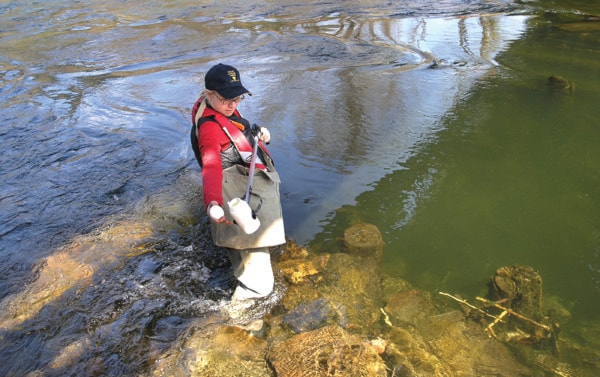Two Blind Bay beaches were re-opened Friday after e-coli levels dropped back down to levels well below federal guidelines of 400 e-coli colony forming units.
Late last week, e-coli levels were back in acceptable ranges of 28 in the sandy portion of the beach and 5 in the pebble area. But Shuswap Lake Integrated Planning Process (SLIPP) officials are still planning to keep a close eye on the situation in a measurable way.
Interior Health recommended the beaches be closed early last week following a huge and sudden spike in e-coli counts – to 3,000 colony forming units.
Columbia Shuswap Regional District Parks and Recreation team leader Marcin Pachcinski quickly followed IH’s advice, posting signs to deter people from using the beach.
Interior Health Protection team leader Jen Jacobsen said the likely culprit in the e-coli spike was goose feces.
Jacobsen says the geese are often in greater numbers at this time of year, congregating prior to their annual migration.
But while regular weekly water samples would indicate the presence of e-coli, they do not reveal whether the strain is from animal or human sources, or if it is deadly 0157:H7 of the Walkerton tragedy.
SLIPP is sampling the Blind Bay area for the source of e-coli.
A process called bacterial source tracking will be used, according to a Sept. 17 SLIPP press release.
“Essentially, if the signal of e-coli is sufficient, scientists will be able to determine the source of the issue,” says the release. “Biological source tracking can determine if the source is potentially caused by waterfowl, humans or other.”
Samples were taken earlier this week and the results will take about three to four weeks.
Shuswap Water Action Team president and SLIPP public advisory committee member Ray Nadeau, says the elevated presence of e-coli in Blind Bay is indeed cause for concern.
“The e-coli could be from a number of sources including hillside development run-off – groundwater is flowing down near the beach – or from sewer discharges from large boats in the adjacent marina,” says Nadeau. “As you know, there is no place to discharge black water in this area and greywater sewage dumping is allowed by the provincial government.”
Nadeau says the unusually high e-coli readings in Blind Bay are perhaps an indication of further problems, making this the time to review the testing that has been done in Blind Bay and determine if it’s adequate considering the number of people who get their drinking water from Shuswap Lake.
“A lot of people have their own water systems and they are not aware their water needs to be treated,” he says. “And even if it is, it’s not always treated to Interior Health standards.
Interior Health officials have long warned against drinking from any surface water source because of the possible presence of bacteria and parasites.
“A couple of thousand people have properties around the lake and unless they’re on a municipal system, most have their own water line,” says Nadeau, noting that while the water can be treated, not everyone treats it to the right degree. “It’s not even safe for cooking if it’s not treated properly.”
Meanwhile, SLIPP is currently monitoring lakes across the Shuswap in order to protect long-term drinking water quality and ecosystem health.
The plan contains monitoring activities in the entire Shuswap watershed under the following four categories:
• Deep station monitoring – overall lake health.
• Near shore and littoral monitoring – local water quality for specific users.
• Water quality effects of specific activities – activities/land uses/water uses.
• Watershed and tributary monitoring – identify sources of nutrients and or contaminants of concern.
